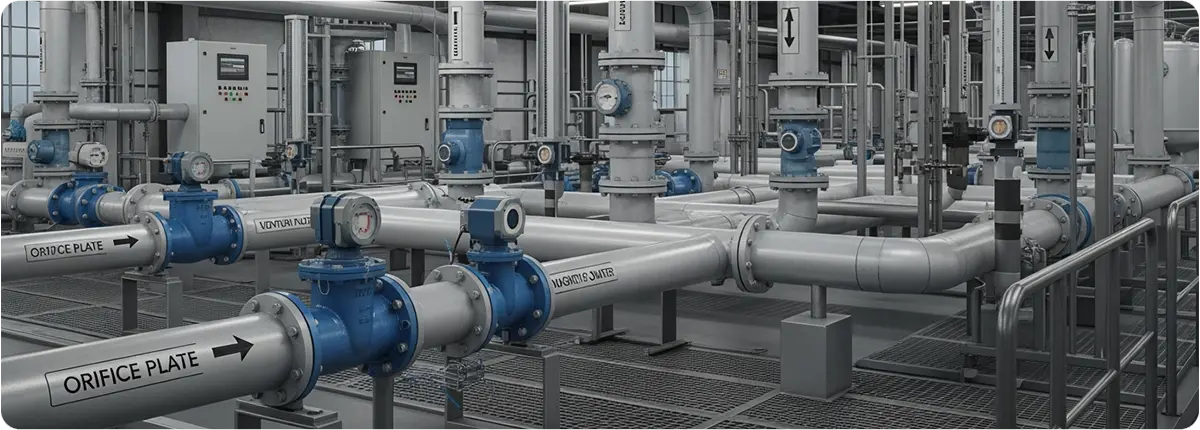Variable Area Flowmeters and Their Applications
Flow measurement is one of the most essential parameters in industrial processes. Accurate flow monitoring ensures energy optimization, process safety, and product quality. Variable area flowmeters, most commonly represented by rotameters, are widely used due to their simplicity and reliability.

WORKING PRINCIPLE
A variable area flowmeter consists of a tapered tube with a float inside. As fluid flows upward, the float rises until the upward force of the fluid balances with gravity. The position of the float corresponds to the flow rate, which can be read directly.
Q = C · A(h) · √(2ΔP / ρ)
Where Q is flow rate (m³/s), C is discharge coefficient, A(h) is the cross-sectional area depending on float height, ΔP is pressure drop, and ρ is fluid density.
MAIN COMPONENTS
- Tapered glass or metal tube
- Float element
- Scale and indicator system
- Optional: Electronic sensors and transmitter integration
ADVANTAGES AND LIMITATIONS
Advantages:
- Simple and robust design
- Direct visual reading
- No external energy required
Limitations:
- Sensitive to viscosity and density variations
- Cannot be used in horizontal pipelines
- Limited accuracy in high-precision processes
APPLICATION AREAS
- Water and wastewater treatment plants
- Chemical industry for liquids and gases
- Laboratory environments for low flow rates
- Food and pharmaceutical industries for basic process control
STANDARDS AND CALIBRATION
- ISO 5167: Flow measurement devices
- OIML R117: International metrology standard for liquid flow measurement devices
- Periodic calibration is required to ensure accuracy
CONCLUSION
Variable area flowmeters remain widely used due to their low cost, simplicity, and reliability. The introduction of electronic rotameters has enabled digital monitoring and integration with SCADA systems, making them more versatile in modern industries.
 Convalve
Convalve Convalve
Convalve